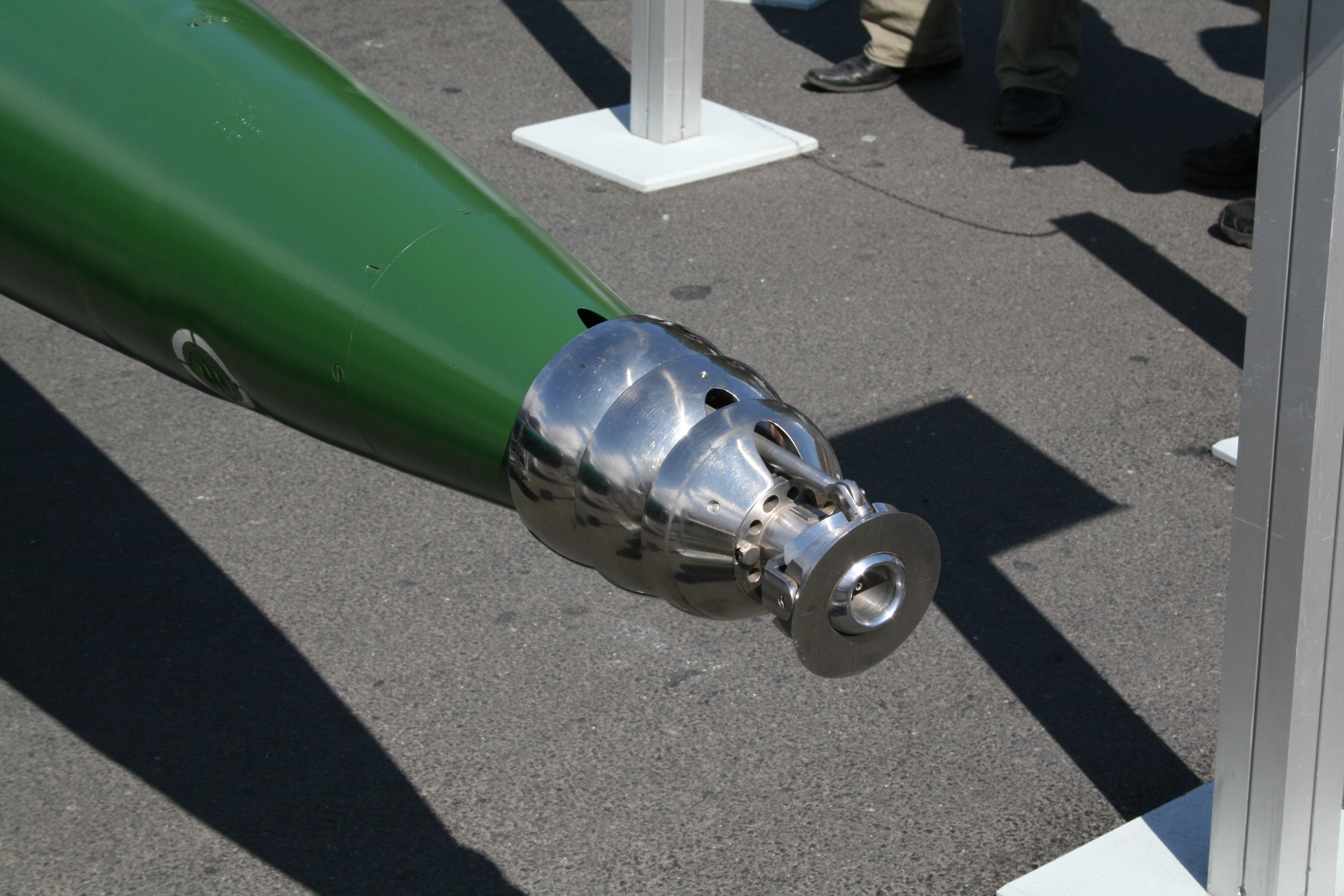


Anatoly Babkin, brilliant Russian scientist and most recently head of the rocket engine faculty at the Bauman Technical University in Moscow, designed a weapon the Russians called Shkval. The Shkval is a supercavitation torpedo, which is capable of being fired by air, surface or underwater, and is known to achieve underwater speeds of at least 300 knots, or aproximately 330 miles per hour, and possibly even more. It achieves this by bleeding some of the gasses produced by its rocket powered propulsion device, expelling these gasses through special apertures on the nose of the torpedo, thus enveloping it in a bubble of gas enabling it to 'fly' underwater.
In this way, the torpedo behaves more like a missile, rather than a conventional torpedo. For those of you who recall your high school physics, force equals mass times acceleration. Since acceleration is a square function, the speed squared is reflected in the resultant force. Thus, any object weighing around 3 tonnes, travelling underwater at 330 mph, will cause catastrophic damage to any ship or submarine it impacts with, without the need for a conventional warhead. Were such a weapon conventionally, or even nuclear armed, the SHKVAL represents a fundamental shift in the balance of power within the context of Naval Warfare, and will change the playing field forever.
The Russian SHKVAL weighs 2700 kilograms, is 8.5 meters in length, has an effective operational range of between 7 and 13 kilometers and costs twelve million US dollars each, if able to locate a compliant source.
Naval strategy has changed dramatically over the past one hundred years, with capitol ship importance passing from Battleships, to Aircraft Carriers and then onto Nuclear submarines, but all are in grave danger before the threat represented by the SHKVAL supercavitation torpedo.
First of all, what is cavitation?
Cavitation is defined as the formation of an empty space within a solid object or body. In the underwater case, It is the phenomena whereby rotating underwater machinery, like propellors, release the gasses contained within the molecular structure of water, beyond a certain speed of rotation, angular displacement of propellor blades, temperature, salinity and pressure, by virtue of its rotation through the water. This is important in the submarine world, because cavitation is a hugely noisy phenomenon and can easily betray the location of a previously undetected submarine.
Here is a brief video demonstrating the phenomena of cavitation.
Typical of the Russians, though, they took this unwanted aspect of underwater operations, this potential liability, and experimented with it in order to obtain a tactical advantage. They succeeded beyond their wildest dreams in the development of SHKVAL.
Below is a rather longwinded video, of tabloid instincts in large parts, but one which has some important tactical information about SHKVAL along with some background information on the submarine KURSK and her tragic loss. This is a Canadian production, rather tedious in the beginning, and I recommend you commence viewing at minute 16. It advances the theory that it was a SHKVAL explosion in the Torpedo room of the Kursk, possibly whilst within a firing tube, which lead to her sinking. There is no firm evidence in support of this, as there is for the involvement of USS Toledo and USS Memphis, particularly the protracted visit of the former to a sealed dry dock in Bergen for 3 days immediately following the loss of the Kursk, but information as it pertains to the weapon itself, is somewhat valuable.
In case there is any doubt as to the effectiveness of torpedoes, here is a brief demonstration of what old technology torpedoes can do. This is the handiwork of a Mark 48, conventional torpedo, fired at conventional speeds with a conventional warhead. the SHKVAL is anything but conventional, in every imaginable way.

No comments:
Post a Comment